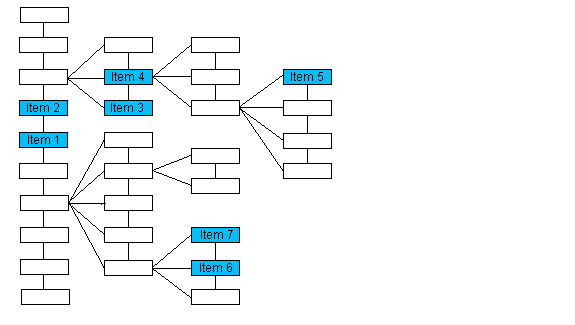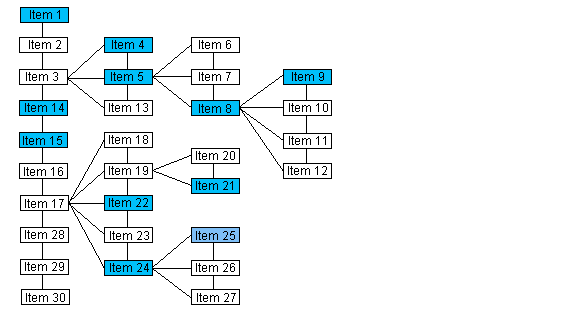
MovePrevIOD method (ILEADDicomDS)
|
Overview |
Remarks
Updates the CurrentIOD property with the item in the IOD Structure that immediately precedes the item specified in the CurrentIOD property. The result depends on whether the IOD Structure is evaluated as a tree or a list.
If the IOD Structure is evaluated as a tree structure, this method updates the CurrentIOD property with the previous item on the same level and with the same parent as the item specified in the CurrentIOD property. Please note that the numbering of the items in this illustration is arbitrary and does not imply order.

|
If the CurrentIOD property contains: |
The CurrentIOD property will be updated with: |
|
Item 1 |
Item 2 |
|
Item 3 |
Item 4 |
|
Item 5 |
NULL |
|
Item 6 |
Item 7 |
If the IOD Structure is evaluated as a list, the CurrentIOD property is updated with the previous item in the list. Please note that the numbering of the items in this illustration does indicate the order of the items when the IOD Structure is evaluated as a list.

|
If the CurrentIOD property contains: |
The CurrentIOD property will be updated with: |
|
Item 1 |
NULL |
|
Item 15 |
Item 14 |
|
Item 5 |
Item 4 |
|
Item 9 |
Item 8 |
|
Item 22 |
Item 21 |
|
Item 25 |
Item 24 |
The following methods will also help you navigate the IOD Structure as either a tree or a list:
If you evaluate the IOD Structure as a tree, you can also use the following methods to navigate the tree:
Note: Visual Basic users can either check the return value of the method, or capture and process errors to determine whether the MovexxxIOD methods have completed successfully. For an example of capturing errors, refer to any of the MovexxxIOD method examples.
See Also